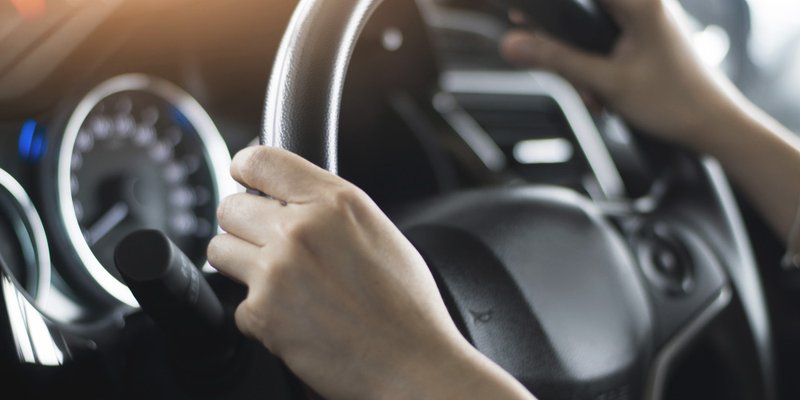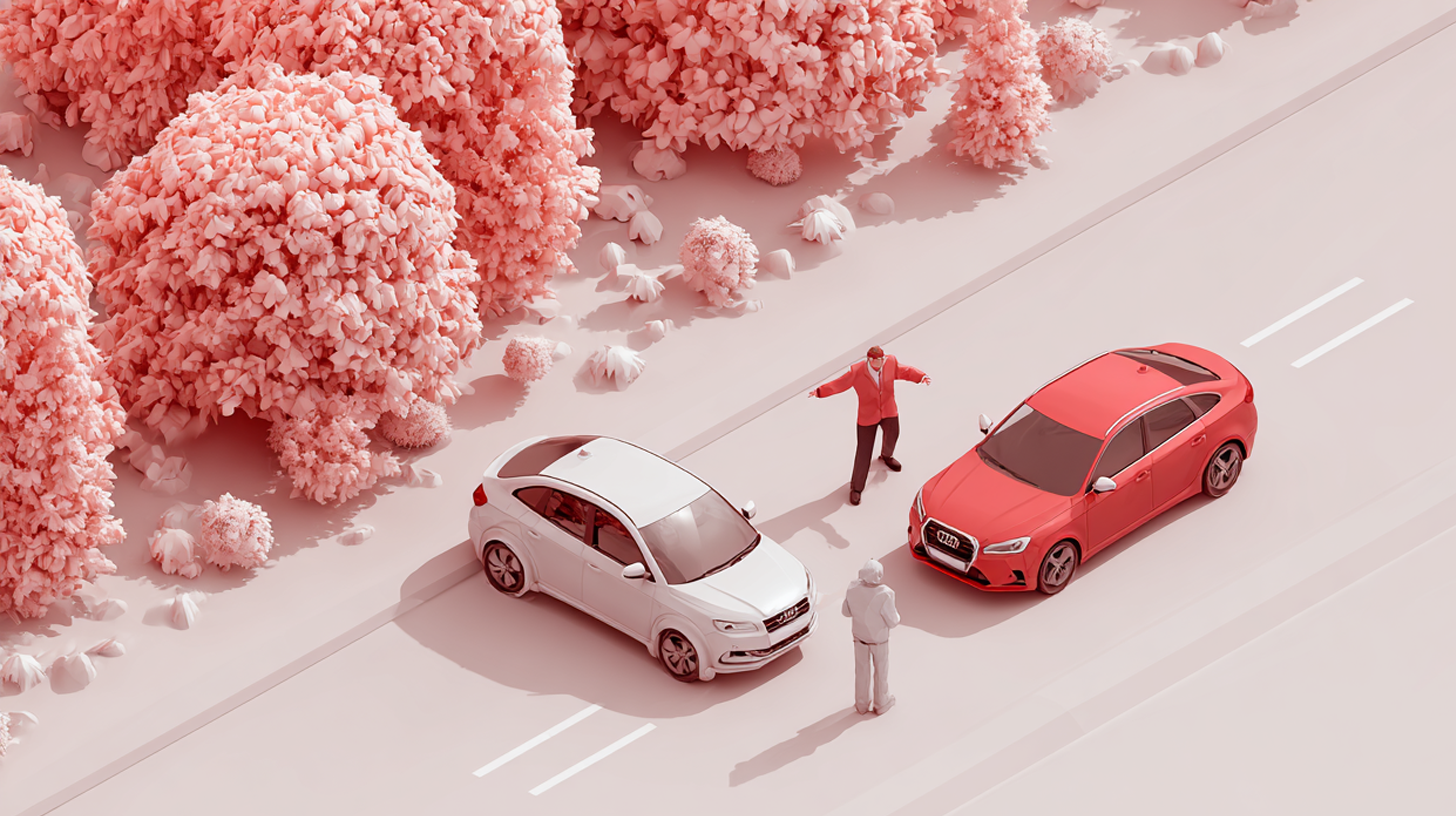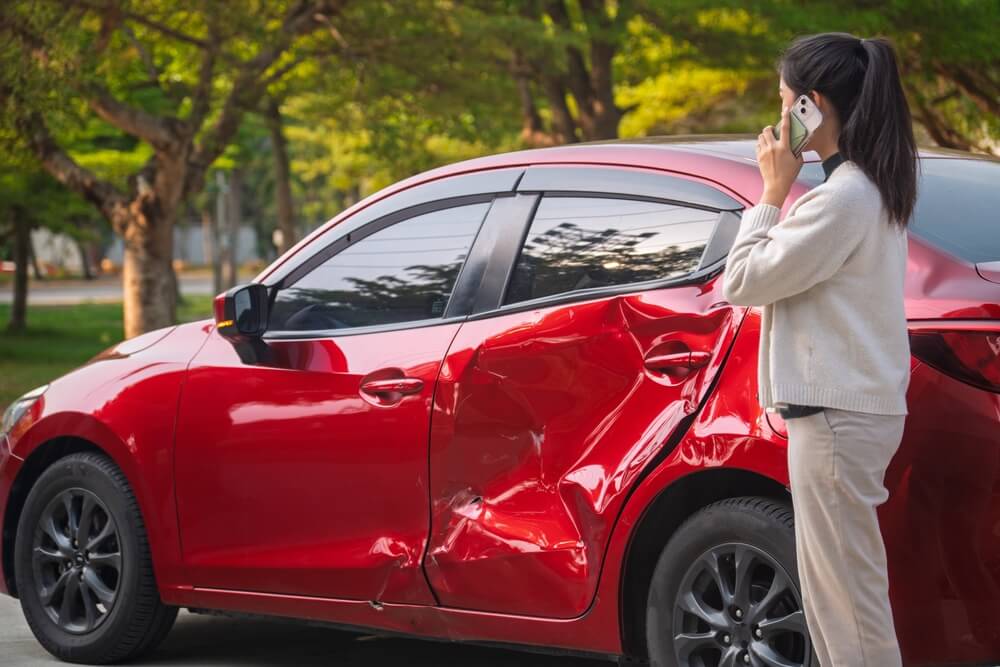
If you are not redirected within 30 seconds, please click here to continue.
Samedi: 10h – 16h HAE

If you are not redirected within 30 seconds, please click here to continue.
If you are not redirected within 30 seconds, please click here to continue.
Protecting Yourself From Uninsured Drivers

Table of Contents
Uninsured auto coverage – it sounds like an oxymoron. But it is an important part of your car insurance, which is designed to protect you in the event you get in an accident with someone who does not have valid coverage. It can also help protect you if you’re the unlucky victim of a hit-and-run scenario. While most Canadians would not consider driving without insurance, or leaving the scene of a serious accident, it happens more often than you might think.
According to the Toronto Star, more than 2,000 uninsured vehicles are involved in accidents each year in Ontario, and about 2% of that province’s drivers are actively driving without valid insurance, despite the fact that doing so carries hefty fines if caught.
The numbers overall in Canada, however, are still much lower than in the U.S., where it is estimated about 13% of all drivers on the road there do not have valid insurance. To make matters worse, the number of uninsured motorists may grow now that we are in a global economic downturn and there is widespread unemployment.
It sounds like I need this coverage. How do I get it?
The good news is that uninsured automobile coverage (in Alberta it is called “uninsured motorist coverage”) is a mandatory part of automobile policies in Ontario. This coverage provides up to $200,000 for damage to property and injuries that otherwise would have been legally recovered from the other driver’s insurance policy.
As long as you have a valid policy with road coverages on it, you have access to this coverage. (An exception would be policies for vehicles that are parked in storage with only comprehensive coverage for fire and theft.)
The cost varies from policy to policy, but typically this coverage represents a nominal portion of your annual premium, often coming in at less than $25 to $50 per vehicle annually.
Don't waste time calling around for auto insurance
Use Rates.ca to shop around, and compare multiple quotes at the same time.
Upping your uninsured auto coverage limit
Unfortunately, the minimum uninsured auto limit might not offer enough coverage for you and your family and may not protect you in every hit-and-run situation. But these issues can be remedied with some savvy insurance add-ons.
There is a Family Protection Coverage option available, which usually provides up to $1 million in coverage. This is an optional rider (an add-on) that provides you with an extra safeguard in case you are injured by another motorist who does not have enough insurance coverage to pay your injury claim. The option is usually quite affordable and does not add much extra to your auto premiums.
In Alberta, drivers also have access to the Motor Vehicle Accident Claims (MVAC) program. The goal is to protect the victims injured by uninsured or unknown drivers by making sure they have a place where they can sue and receive payment for their personal injuries. MVAC’s maximum combined payment for all victims of an accident is $200,000. (If there is more than one claimant to an accident, and the total value of all claims exceeds $200,000, then each claimant will receive a proportional share of the $200,000 maximum.)
Hit-and-run scenarios are a bit more complicated
If you are the victim of a hit-and-run scenario where the other driver has fled, the amount of protection you have will depend on what you’re claiming.
If your vehicle is damaged by an unidentified driver who has fled the scene, there is no coverage for that damage under your uninsured auto coverage. Meaning, in a hit-and-run, you will also need to have collision coverage to cover the damage to your car. This a common scenario insurance companies encounter and hit-and-runs tend to happen with parked, unoccupied vehicles where no one is around to witness the accident.
Vehicle damage is only paid under uninsured auto if the third party is identified, and it can be confirmed that they have no valid insurance. However, if you do happen to be injured from a hit-and-run, you will still be able to use your uninsured auto coverage for your injuries.
What to do if involved in a hit-and-run accident
If you are involved in an accident where you’re not able to get the insurance info from the other driver because they have fled, the first thing to do is call the police. While waiting for their arrival, try to make a record of everything that happened so you don’t forget, including notes on the location and which way the vehicle was travelling, if you are able. Note any info about the vehicle itself, like the make, colour, and model, any identifiers (like a bumper sticker or broken taillight) and if there were any passengers and take photos and videos if possible. Talk to witnesses, if any, and see if they are willing to give you their contact info.
What if someone refuses to give their insurance info?
If someone does not want to provide their insurance information, contact the police immediately. In an automobile accident, drivers are obligated by law to exchange insurance information. In the meantime, safely obtain whatever information you can, such as a licence plate, and a description of the vehicle and driver. Again, try to remember as many details as possible so you can pass them on to the police.
Making a claim with uninsured auto insurance
After an accident, calling the police, and making sure you are safe, the next thing to do is to call your broker or insurer. Do this as soon as possible, and before fixing your car or incurring large expenses from any medical treatments you may need as a result of injury. Remember, your insurance company needs to evaluate all elements of the claim before issuing a payment to you, so the sooner they are aware, the sooner you can expect to receive your benefits. Keep copies of all receipts and other reports and files.
It’s important to note that an uninsured auto claim can take time to process and requires documentation. If you have questions about your car insurance coverage, it never hurts to reach out to your broker or provider and make inquiries.
Latest Articles
Get money-saving tips in your inbox.
Stay on top of personal finance tips from our money experts!










